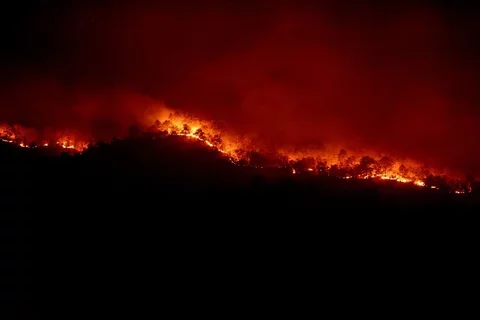How do you know if the wildfires are making you sick?

The wildfires raging throughout California and Oregon have caused great concern about air quality and the safety of being outdoors. And dealing with the public health implications of the fires is further complicated by the COVID-19 pandemic.
Dr. Reza Ronaghi, a pulmonologist at the David Geffen School of Medicine at UCLA, explains how wildfires affect air quality and what precautions people can take during the pandemic to limit exposure to smoke and other fire-generated toxins in the air.
How do you know if the wildfires are making you sick?
If you are healthy, minimal exposure to wildfires – such as experiencing a fire once or twice a year – likely won’t make you sick. However, fires can create unpleasant symptoms that are important to look out for such as runny nose, burning and watery eyes, sore throat and chest pain, and shortness of breath.
In the elderly or those with chronic lung conditions, being exposed to smoke can make an underlying condition worse, and can cause worsening of symptoms such as cough [and] shortness of breath, which can sometimes require hospitalization.
It’s very important to avoid exposure to fires to prevent such symptoms. If you develop any of the above symptoms after exposure to the fires, it is important to seek medical care.
How can people stay healthy and safe during a fire?
The particles from fire that cause lung disease are micromillimeter in size, typically one-thirtieth the size of a strand of hair, and can embed themselves deep into the lung tissue and cause disease. The most important thing is to stay indoors in order to prevent exposure to these particles.
It’s also important to listen to local authorities, such as fire department and public health officials, when they share information about air quality and whether it is safe to go outside or not.
Original Article: "How do you know if the wildfires are making you sick?"



